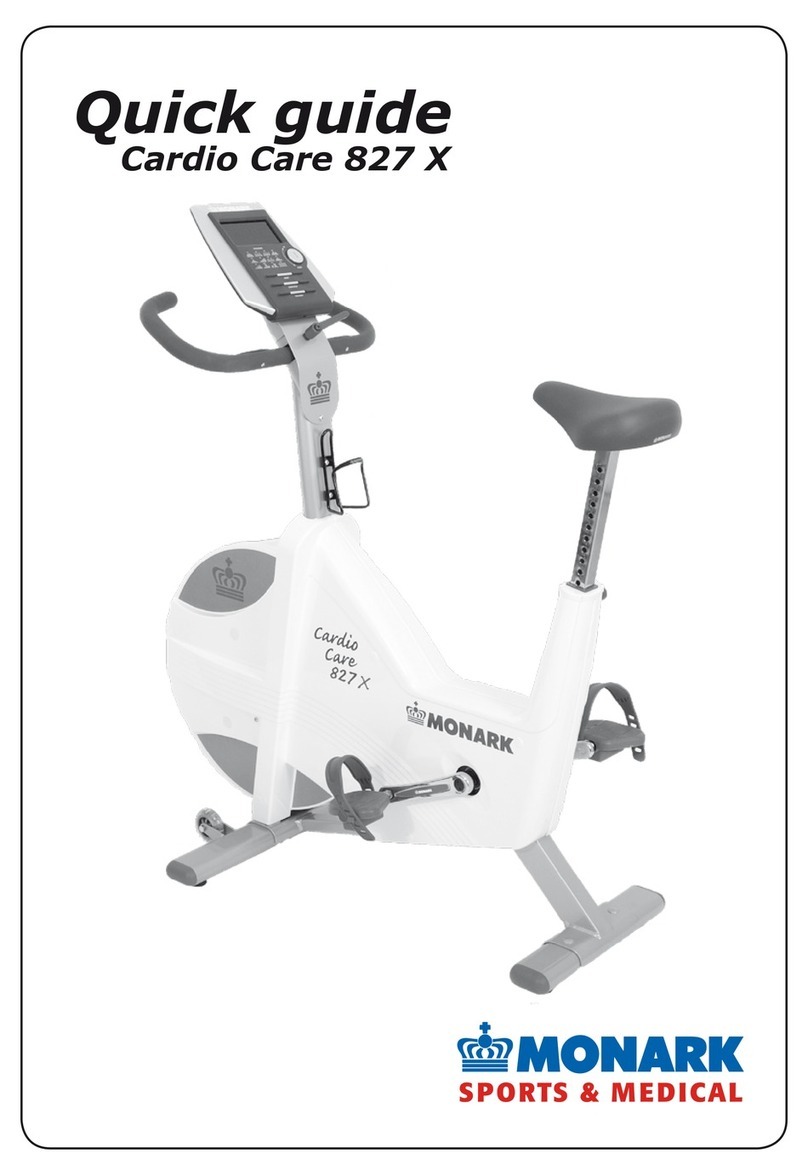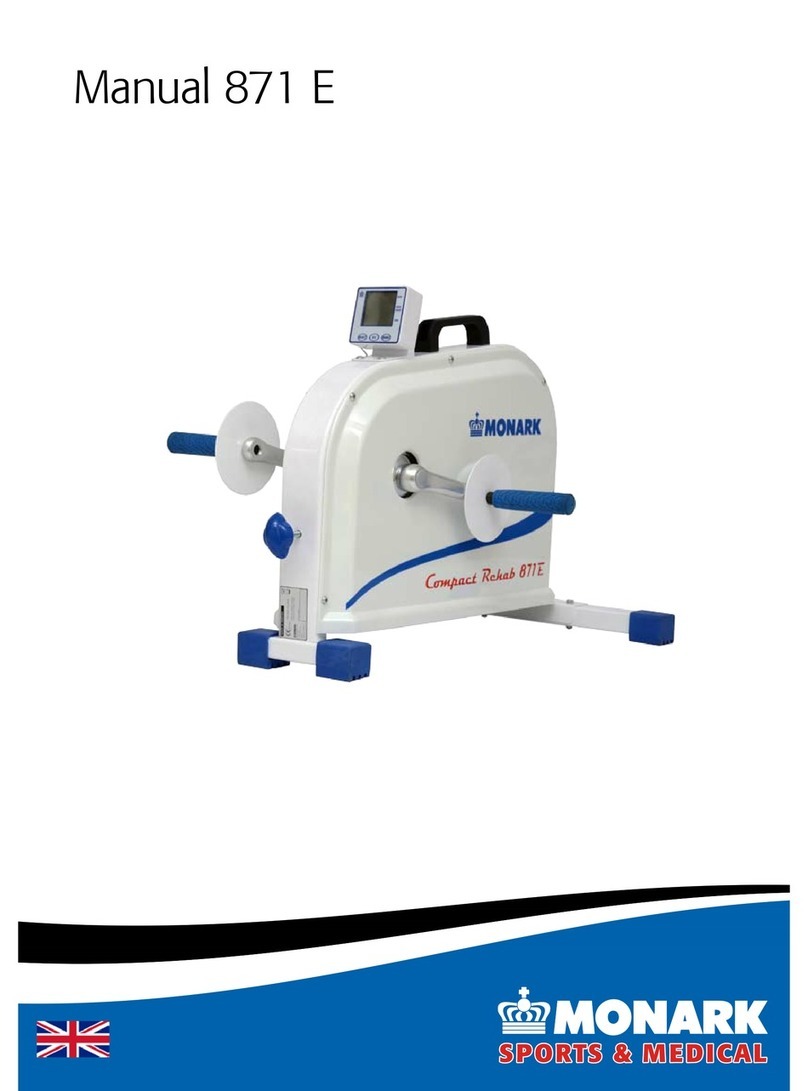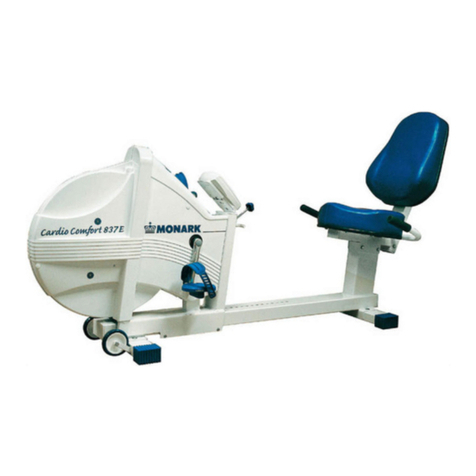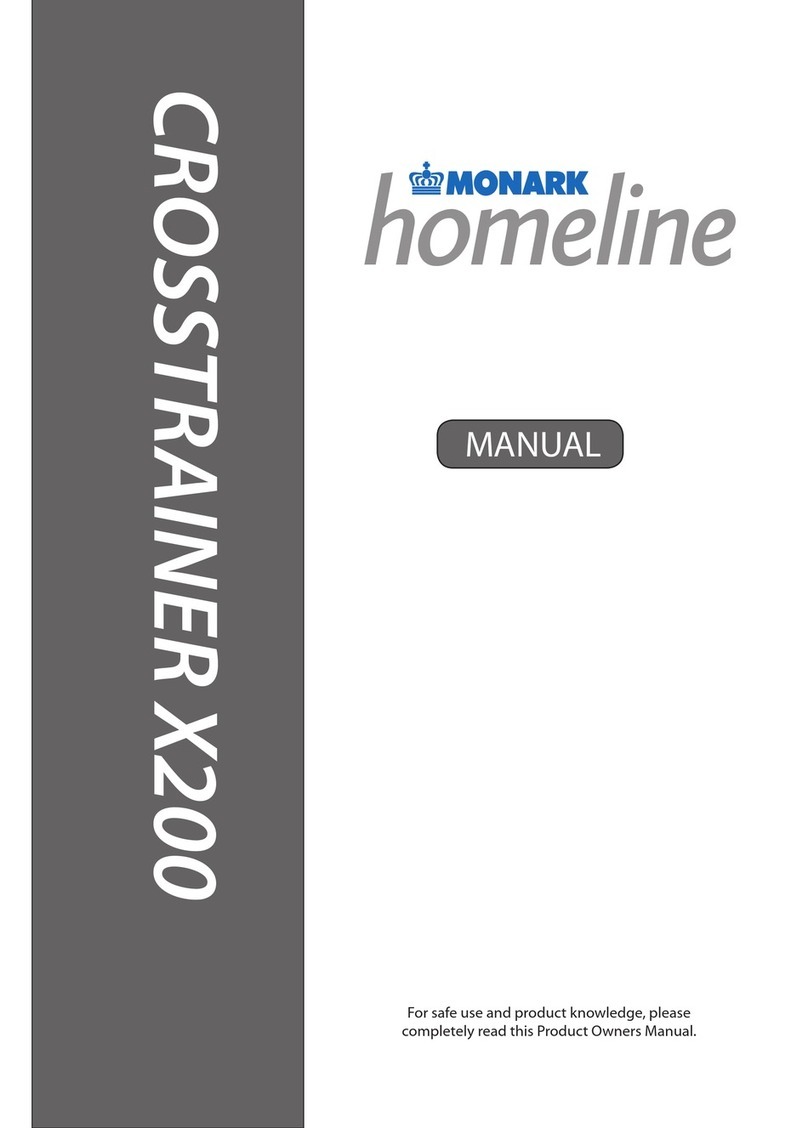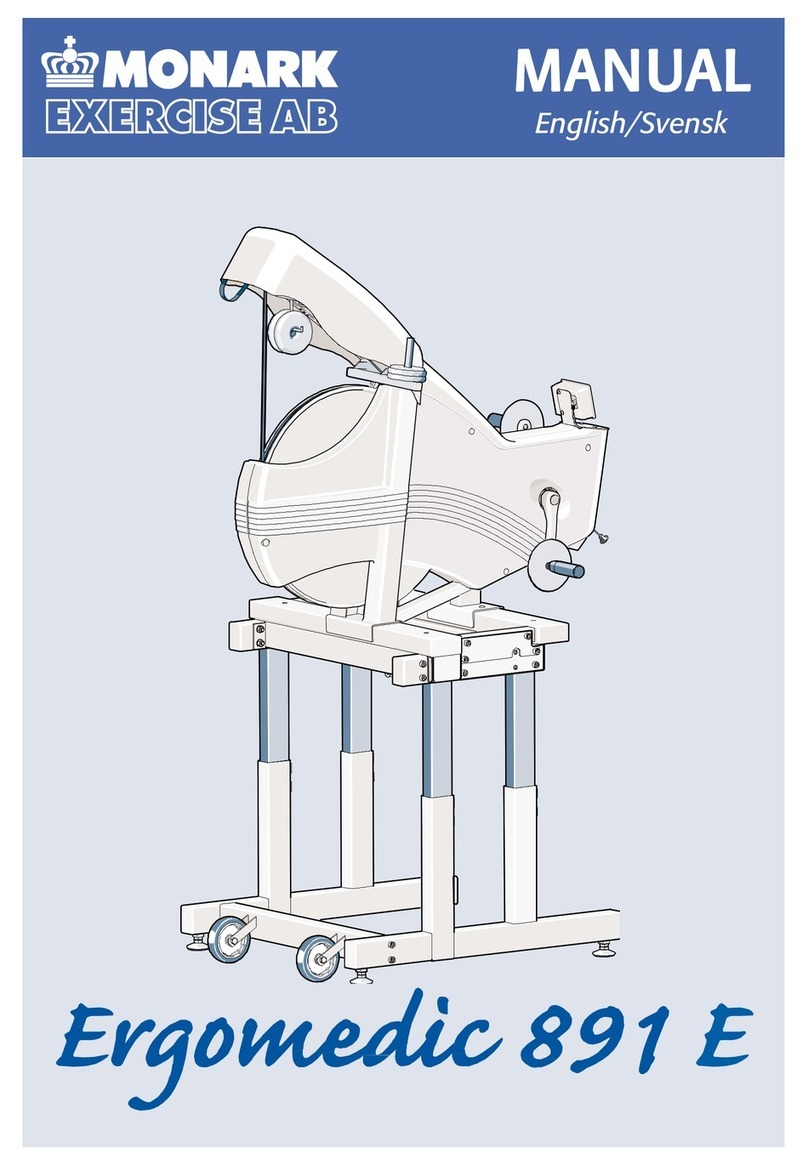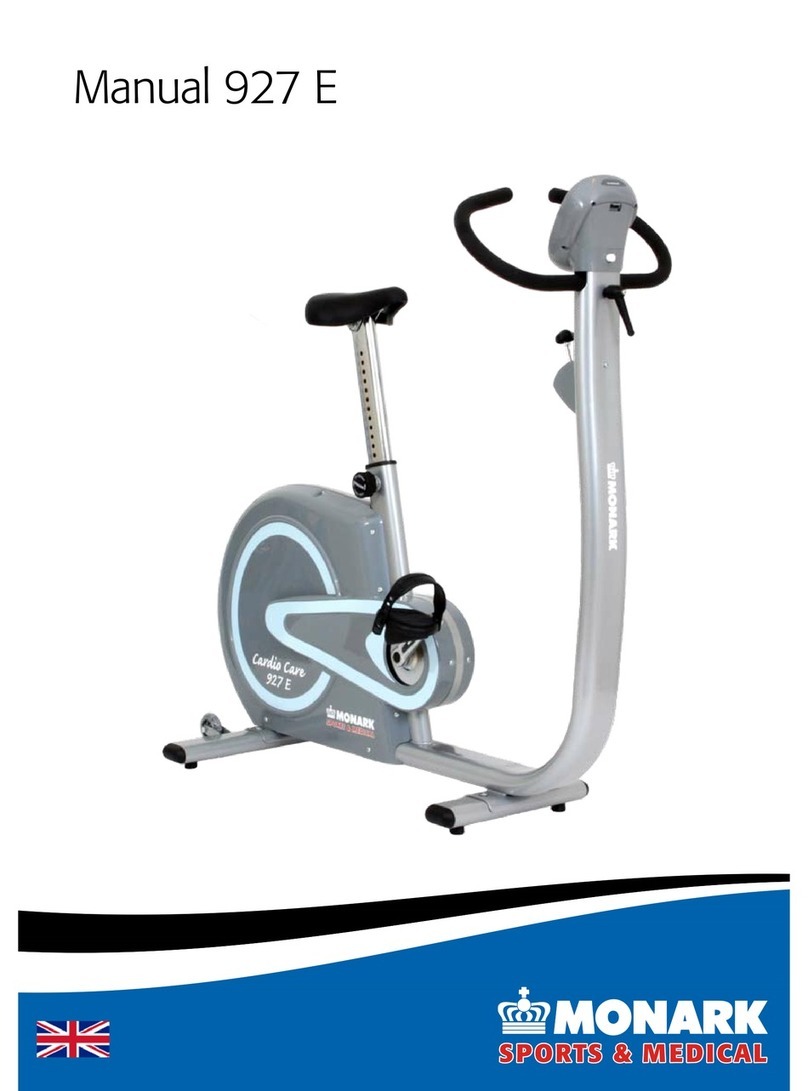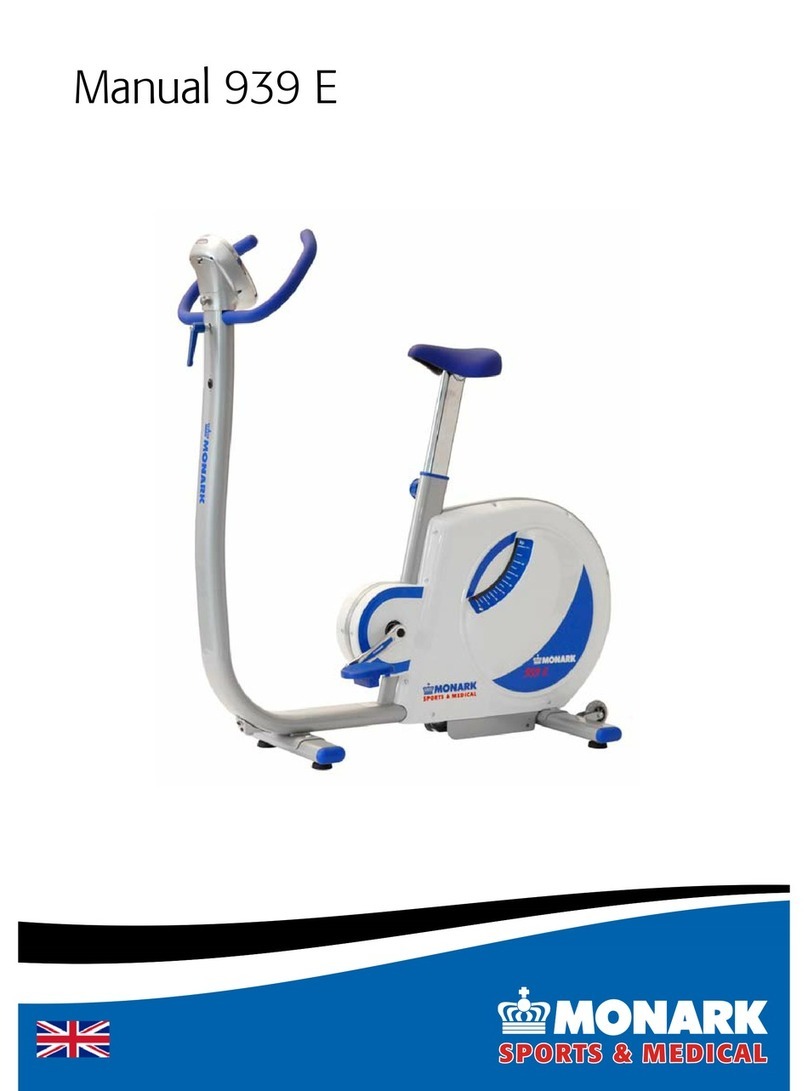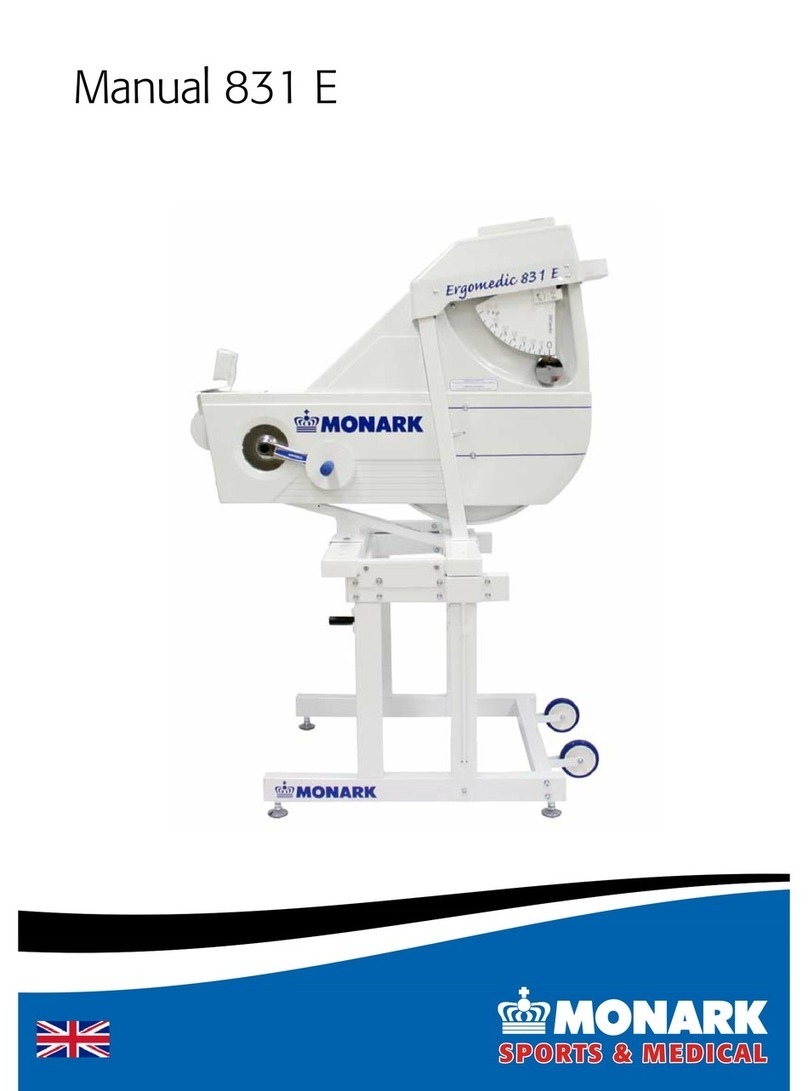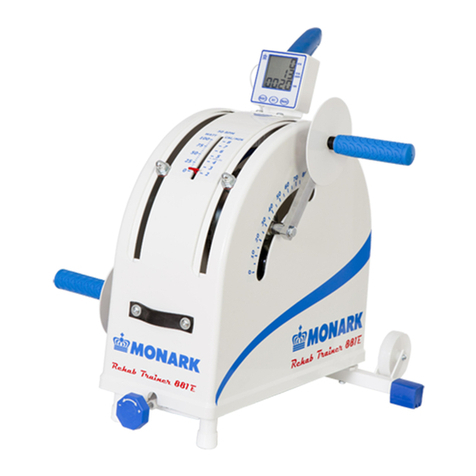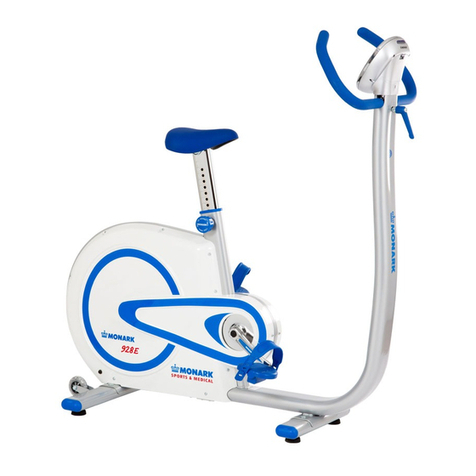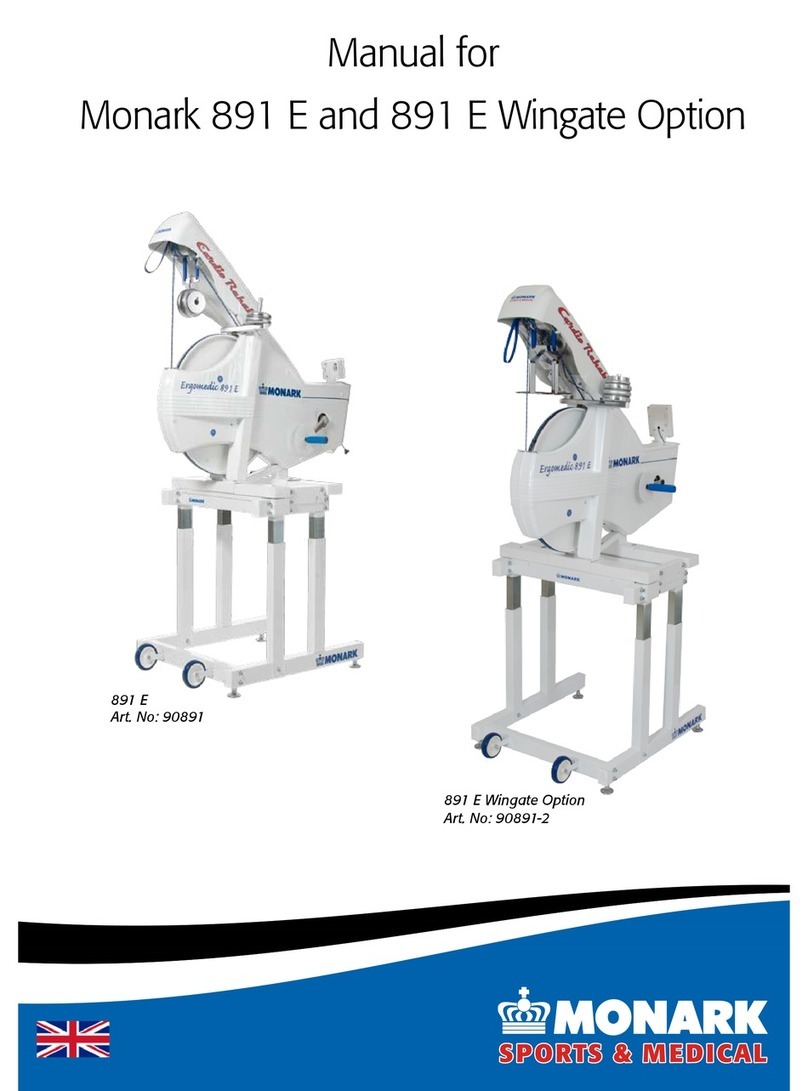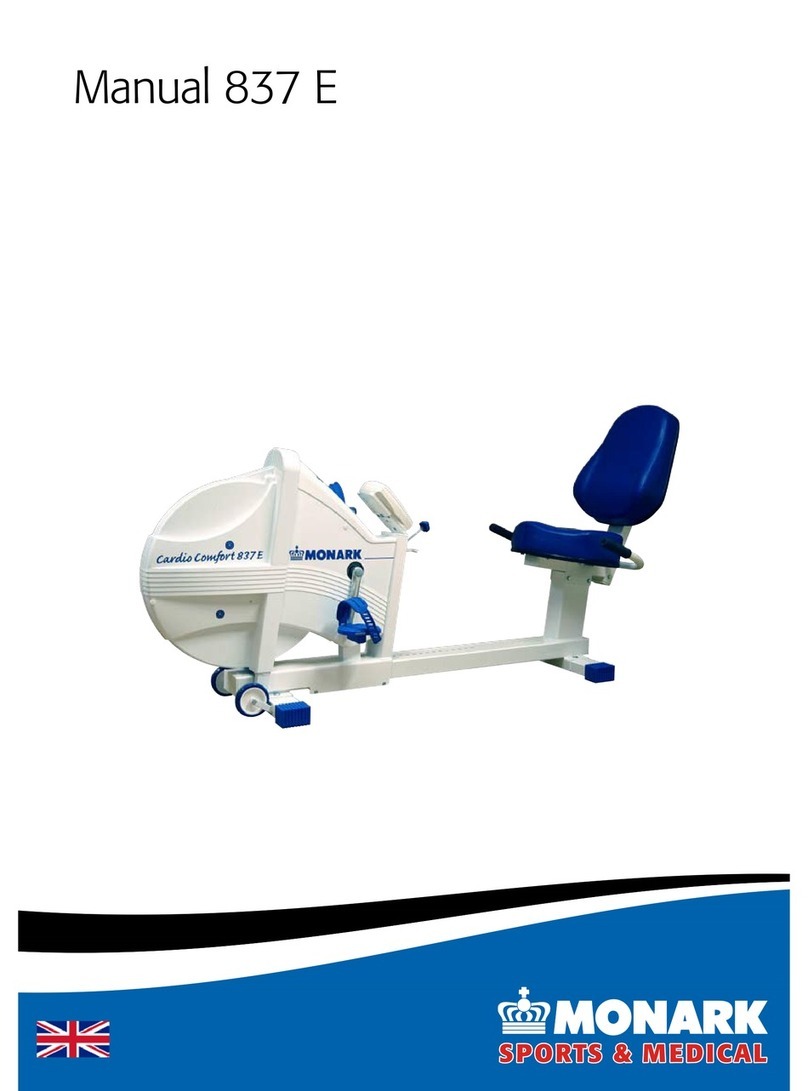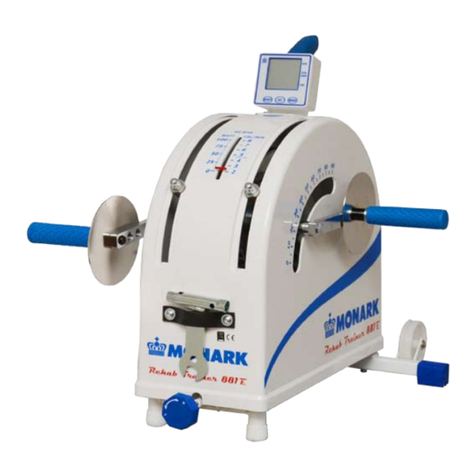10
OPERATION INSTRUCTIONS cont.
Fig 21
Fig 22
Table 1. Oxygen Comsumption (L/min) at Workloads Below the Anaerobic Threshold:
Work (Approx Watts) V02 Work (Approx Watts) V02
(kpm/min) (kpm/min)
150 24 .6 400 64 1.1
200 32 .7 450 72 1.2
250 40 .8 500 80 1.3
300 48 .9 550 86 1.4
350 56 1.0 600 96 1.5
When the marker stand at ”RPM” pedal revolutions
per minute are shown. Fig 21 shows 50 pedal revolu-
tions per minute.
When the marker stands at ”REV” the toal number of
revolutions achieved during the exercise is shown. Fig
22 shows a total of 500 pedal revolutions.
5 minutes after the cyling is finished, the meter is au-
tomatically shut off.
After the exercise is finished, the registrated total num-
ber of pedal revolutions are kept in the meter.
If the exercise is stopped more than 5 minutes before
the exercise time setting, the remaining time – when
the meter is automatically shut off – will still be there,
when the meter is started over again.
As to resetting, please see figures 15, 16 and 17 at page
9.
WARNING! Do not expose the electronic meter to
direct sunlight or extremely high temperatures. Do not
use any dissolvents when cleaning but a dry cloth.
Handling
Work is started with a slack brake belt. Thereafter, the
belt should be stretched with the tensioning knob un-
teil the required workload is obtained. A metronome
will assist the subject in maintaining the porper rota-
tional speed. As the belt and wheel get warmed up, the
friction will change, necessitating readjustment, espe-
cially if the trainer has been unused for any length of
time.
Published test protocols for the arm ergometer have
been limited. One of the few in print by Jones and
Campbell, recommended increments of 50 kp/min
(approximately 8 Watts) for their Stage 1 study. (5)
